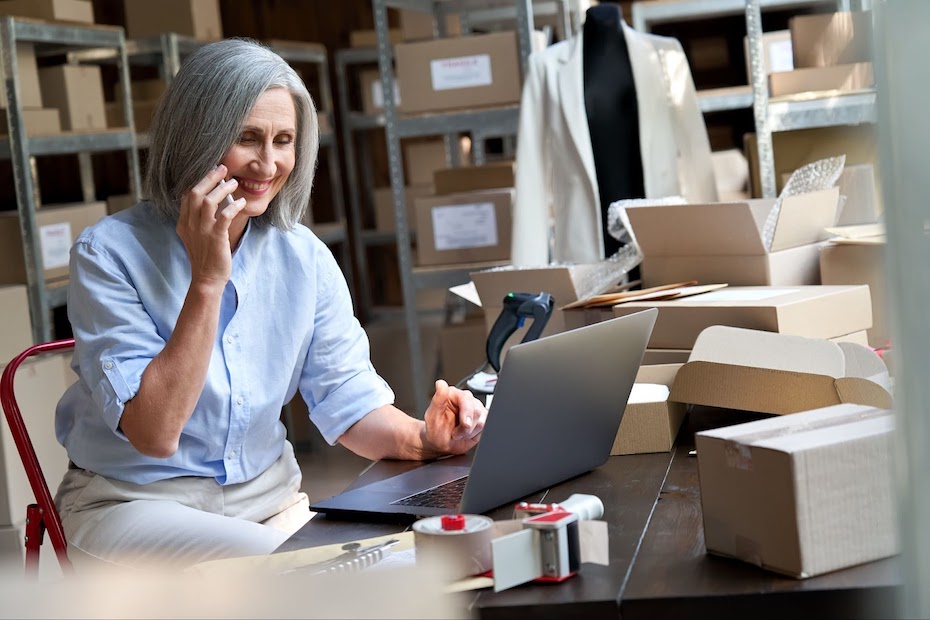Highlights
- The Great Resignation has impacted retailers significantly, with record numbers of retail employees walking away from their jobs in the past two years.
- Attracting and retaining employees includes more than simply increasing their wages. It involves also providing a better employee experience.
- Using the right communications platform can enhance employee experience and aid in talent acquisition and retention.
💁🛒💻 Want to see how a unified communications and collaboration strategy can create an effortless employee experience that allows your team to better serve shoppers at all stages of their journey? Grab our eBook.
In 2021, 47.4 million people quit their jobs. That’s a more than 30 percent increase in quits from 2020, when 36.3 million left their positions voluntarily. This trend, known as “The Great Resignation,” cuts across age groups and industries, with everyone from Baby Boomers to Millennials to Gen Z throwing in the towel. The reasons vary, but a major driving force, economists agree, has been the global COVID-19 pandemic.
In an effort to fix the resultant worker shortage, many employers have upped pay—but frequently they’re finding even that’s not enough to keep staff.
“People have been living to work for a very long time,” economist Karin Kimbrough recently told CBS News. “And I think the pandemic brought that moment of reflection for everyone. ‘What do I wanna do? What makes my heart sing?’ And people are thinking, ‘If not now, then when?’”
Ways to improve the retail worker experience
Luckily for retail employers seeking staff, research has shown that there are other ways to build worker loyalty and satisfaction and increase retention. Here are some of the best ways for retailers to up the likelihood of attracting and retaining top talent.
Commit to health and safety for employees
In the COVID-19 era, workers are placing higher value on employers that look out and make special accomodations for their health and safety. In a recent PwC survey, just over 50 percent of workers who were forced to stop working or to work remotely during the pandemic wanted guarantees of safety from their employers before resuming business as usual.
Retailers must comply with any mandated precautions on a state or local level, but retailers that want to retain their workers might want to consider going above and beyond mandated regulations for their health- and safety-promotion measures.
Many retail workers have reported being under immense pressure to report to work while feeling sick or having tested positive with the virus, according to a Los Angeles Times article. Workers who are now prioritizing health and safety over their jobs are not hesitating to leave retail environments they deem as unsafe.
Retailers that adhere to stated and written guidelines and consistently enforce stay-healthy measures gain the trust and respect of their employees and mitigate employee churn in the process.
Offer “work-life balance”—and mean it
In recent decades, when it became apparent that workers were tiring of rigid, all-consuming careers that failed to give even an ounce when their personal lives came calling, the term “work-life balance” was coined—and employers began throwing it around in an effort to woo hires. But not all of these employers meant it, and workers soon got wise.
Now, in an era in which a global pandemic has made people everywhere value what truly matters—health, family, and relationships, for example—the bar is even higher for retailers wanting to showcase their compassion and flexibility to interest potential staff members.
Workers these days “are thinking about the lives they want and seeking jobs and employers that support that experience,” writes Liz Alton for ADP.com. “This inverts the more traditional approach of finding a job and then building a life around what that job’s hours, income, and other factors permit.”
More and more, people want flexible schedules and bosses who understand a last-minute callout owing to a sick kid, a COVID-19 school shutdown, a broken HVAC system, and the like.
To this end, retail employers should consider upping their flexible work arrangements. That can include offering more part-time positions, location flexibility, hybrid work environments, job-sharing opportunities, and flextime.
SHRM.org notes: “Even in the absence of a pandemic, flexible work arrangements can improve recruitment and retention efforts, augment organizational diversity efforts, encourage ethical behavior, and help the organization’s efforts to be socially responsible. Employers can experience cost savings, improved attendance and productivity, and an increase in employee engagement.“

Provide retail employees with the communication tools to support collaborative work from anywhere
Retailers learned during the recent pandemic that remote work is not only possible, but preferable for many retail employees. Although there will always be a need for some employees to be physically present in retail stores, the move to online shopping has made remote work more accessible to many retailers.
To successfully transition retail workers to a remote or hybrid work model, retailers must have the infrastructure to support such models. That includes having a cloud-based communications platform that connects remote workers with both team members and customers effectively.
Such platforms allow retail employees to work remotely, but they also allow those employees to provide a more tailored approach to shopping. Online customer help desks and personal shoppers connecting with their customer base with just the click of a mouse provides a convenient, personalized shopping experience for customers as well as a better experience for employees.
Retailers that invest in better communication tools are likely to attract and retain employees more easily going forward than those that do not provide flex-friendly tools. To provide the best employee experience, retailers should look for an all-in-one communications platform that supports:
- Telephony
- Video conferencing
- Messaging (both for internal collaboration and customer support)
- Contact center capabilities
- Chatbot functionality
- Intelligent call routing
- SMS order alerts to support BOPIS and delivery processes
- Seamless transitions from in-store to online interactions and vice versa
- End-to-end security for any device and any channel used

UP NEXT: 5 retail predictions for 2022
RingCentral: the communications and collaboration solution for retail
RingCentral is the one-stop-shop for better retail employee experiences. Our market-leading, cloud-based communications platform helps retail employees connect with team members and customers seamlessly across multiple digital channels from any device.
Employees and retailers can rest assured that organization, employee, and customer data are all safe with seven layers of security and HITRUST-CSF certification, no matter where work happens.
With messaging, video, and phone capabilities, combined with intelligent contact center functionalities and integrations with other popular work tools, RingCentral supports retail workers as they collaborate with each other and engage with customers via a single app.
Improve your employee experience and mitigate some of the effects of the Great Resignation with RingCentral. Request a demo of RingCentral for Retail today.
Originally published Mar 14, 2022